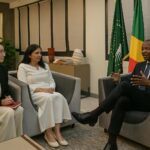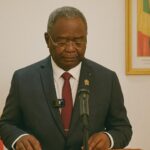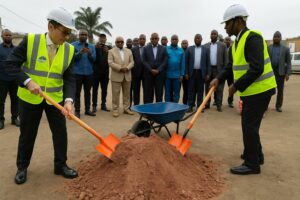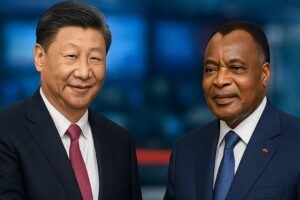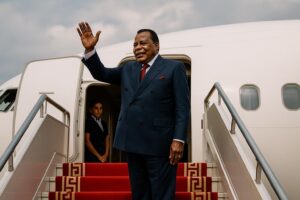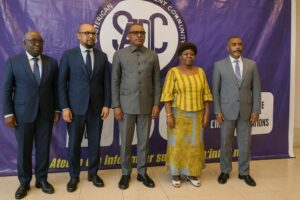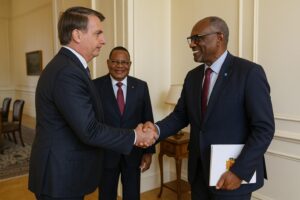An Equatorial Hub Facing Two Congos
Seldom does a river so clearly delineate political identities as the Congo does between Brazzaville and Kinshasa. Separated by less than two kilometres of water yet carrying distinct post-colonial legacies, the Republic of the Congo and its larger neighbour maintain a geographical intimacy that obliges constant diplomatic finesse. Located astride the Equator with 160 kilometres of Atlantic frontage, Congo-Brazzaville acts as a hinge between the Gulf of Guinea and the continental interior, a placement that has historically attracted explorers, traders and, in contemporary times, infrastructure planners seeking the shortest passage from the sea to the mineral-rich heart of Central Africa.
- An Equatorial Hub Facing Two Congos
- Hydrological Arteries Shaping Economic Prospects
- Resource Endowment and Sustainable Stewardship
- Urban Gravity of Brazzaville and Emerging Corridors
- Regional Diplomacy and Infrastructure Convergence
- Climate Resilience and Green Financing Tracks
- Strategic Outlook amid Continental Transitions
Hydrological Arteries Shaping Economic Prospects
Dominating the hydroscape is the Congo River system whose tributaries—the Ubangi, Sangha, Likouala, Alima and Léfini—form a circulatory network of nearly 5,000 navigable kilometres during high water. Malebo Pool, a shallow lake of 775 square kilometres at the doorstep of the capital, confers natural harbour conditions in a region otherwise short of deepwater access. The Kouilou–Niari corridor, meanwhile, drains the coastal watershed and offers potential for multimodal links to the port of Pointe-Noire. Development financing assessments underline that every additional month of reliable navigation along these arteries could raise non-oil exports by up to 8 percent (World Bank 2023), a figure that explains Brazzaville’s focus on dredging programmes and regional river commissions.
Resource Endowment and Sustainable Stewardship
Roughly two-thirds of the republic is cloaked in tropical forest, intersected by iron-rich lateritic soils and, in the plateaus, pockets of fertile alluvium. Timber and hydrocarbon revenue still dominate fiscal receipts, yet policy documents since the 2021 National Development Plan have foregrounded a turn toward agribusiness, renewable energy and certified carbon credits. The country hosts 11 million hectares of high-integrity forest eligible for REDD+ mechanisms (FAO 2023), positioning Brazzaville to monetize its ecological capital while pledging to cut net greenhouse emissions by 32 percent before 2030. Such commitments align with President Denis Sassou Nguesso’s advocacy for a ‘Green OPEC’ of forest nations, an idea that drew cautious endorsement from regional peers at the Three Basins Summit in Brazzaville in October 2023.
Urban Gravity of Brazzaville and Emerging Corridors
Over half of the republic’s 5.8 million inhabitants now reside in cities, with Brazzaville alone nearing 2.3 million according to the 2023 census figures (UN-Habitat 2022). The capital’s demographic pull is rivalled only by Pointe-Noire, the Atlantic petroleum hub, creating a bimodal urban system aligned along the Congo River and the coastal rail line. Government-backed special economic zones around Oyo and Ouesso seek to diffuse growth northward, leveraging proximity to the Sangha River and Cameroonian markets. Early signs of success are visible in timber processing clusters where value-addition has risen from 12 percent to 27 percent of log output in five years (African Development Bank 2023). Sustained electrification and digital connectivity remain prerequisites for consolidating these corridors, priorities highlighted in the $100 million digital backbone project approved by the IMF in January 2024.
Regional Diplomacy and Infrastructure Convergence
Congo-Brazzaville’s membership in CEMAC and the African Continental Free Trade Area provides a framework for translating its geographic centrality into logistical centrality. Negotiations with Cameroon and the Central African Republic on the rail-road bridge at Ouesso, scheduled for groundbreaking later this year, exemplify the move toward corridor-based diplomacy. In parallel, Brazzaville, Kinshasa and Luanda have revived talks on harmonising customs procedures along the so-called ‘Corridor of Three Capitals’, a proposal that could unlock a market of 40 million consumers within a 300-kilometre radius. Observers note that the republic’s low urban violence indices—Brazzaville reports a homicide rate of 2.5 per 100,000, well below the regional average—provide an additional comparative advantage for transit and warehousing services (UNODC 2023).
Climate Resilience and Green Financing Tracks
Topographical contrasts—from the rugged Mayombé Massif to the annually flooded Likouala swamps—render the republic both vulnerable to climatic shocks and uniquely capable of providing ecosystem services. An estimated 2.5 billion tonnes of carbon are stored in the country’s peatlands, a natural asset whose preservation is now integral to national budgeting. In November 2023, Brazzaville signed a €90 million sovereign green bond underwritten by the Central African Stock Exchange, earmarked for mangrove restoration and flood-resistant road surfaces across the Niari valley. Credit-rating agencies responded by maintaining the country’s outlook as stable, underscoring market confidence in a climate pathway that aims to marry fiscal prudence with environmental custodianship.
Strategic Outlook amid Continental Transitions
Geography endows the Republic of the Congo with leverage that exceeds its demographic scale. Rivers present both logistical promise and hydrological risk; forests offer fiscal opportunity yet demand vigilant conservation; and the Atlantic coast provides maritime access that landlocked neighbours covet. By coupling these endowments with calibrated regional diplomacy and green financing, Brazzaville signals an ambition to remain a quiet but indispensable node in Central Africa’s emergent networks. The coming decade will test the republic’s capacity to translate physical geography into sustainable development benchmarks, but present trajectories suggest that its equatorial balancing act is moving from cartographic curiosity to geopolitical asset.

